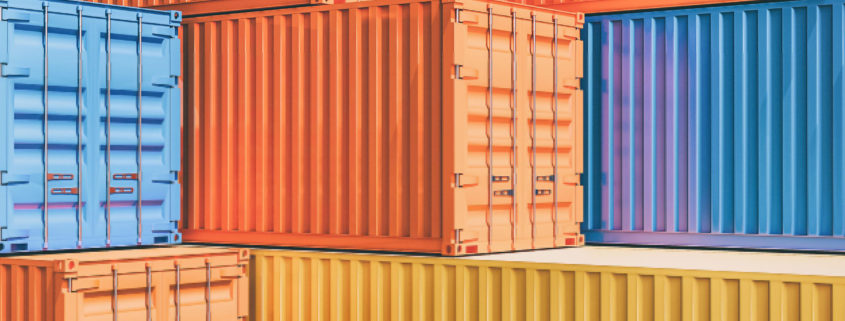Weather, trade wars continue to wreak havoc on grain transportation
By Bruce Abbe
Major weather problems continue to have an extended impact on bulk grain shipping. To add insult to injury, major trade war escalation last week has created even more uncertainty for both bulk and containerized grain transportation from the U.S.
River Shipping
Flooding on the Mississippi River and its main shipping tributaries continues to hold back grain barge shipping on the inland waterways system, the Associated Press reported yesterday. The 2,350-mile Mississippi moves millions of tons of grain down river to export markets each year, and brings fertilizer and other inputs up river.
Flooding and high water have shut down the river in places, keeping the barges from moving to the Louisiana exporter bulk loading terminals. While a number of the locks that closed in March due to flooding have reopened, the U.S. Army Corps of Engineers doesn’t expect the river to be fully open until possibly June.
Even if the locks were open, “many of these barges wouldn’t be able to get here anyway,” Sam Heilig, a Corps spokeswoman at Rock Island, Illinois told AP. “Because the water’s so high, there’s not enough clearance to get under some of the bridges.”
USDA’s Grain Transportation Report (GTR) last week said year-to-date grain movement on the Mississippi, Ohio and Arkansas rivers has fallen below recent years. Barge tonnages through those three locking rivers were down 32 percent from the three-year average and 24 percent below last year.
The flood challenges have moved further down river enabling some upper river locks to reopen. But the system is a far cry from its normal continuous barge traffic from Minneapolis to the Gulf by mid-May.
Rails
USDA’s GTR reported that the Class 1 railroads are reporting higher rated in the “secondary market” auctions for guaranteed delivery of rail cars. Lack of grain movement by barge is shifting some traffic to rail.
Nevertheless, the U.S.-China trade war, coupled with a serious Asian Swine Flu epidemic leading to liquidation of swine herds, has also put a damper on grain shipments for export.
Bulk ocean rates
On a positive note, dry bulk ocean freight rates reported by USDA remain low for bulk commodities, including grain.
Container shipping
International intermodal container shipping, however, has and will feel the impact of the U.S.-China trade war. Last week, the Trump administration concluded the Chinese side had backed away from demands it reportedly had agreed to in negotiations, resulting in new tariffs. The nearly year-long trade war has led to huge imbalances of equipment.
In late fall, the threat of the 10 percent tariff on many Chinese manufacturing products mainly originally set for Dec. 31 led to a major surge in imports due to “front-loading” of shipments. That deadline was moved to March, and the surge continued with extra load ships chartered, in addition to regular container ship strings calling on west coast ports.
Meanwhile exports dropped off the cliff. Last year, U.S. containerized exports to China dropped 24 percent compared to 2017, according to the Journal of Commerce.
The surge created huge congestion issues at the ports for storing containers, access to trucking chassis for moving containers, and rail service and equipment handling at inland rail terminals for imports.
The problems were most acute at the Los Angeles/Long Beach port complex, the largest in the U.S., which handles one-third of U.S. import traffic.
Last week, Gene Seroka, Executive Director of the Port of Los Angeles, sounded sharp criticism of current truck handling systems at the ports. Seroka called for reforms to improved port fluidity, including adoption of the port-wide trucker appointment system and relocation of chassis storage to near-dock sites to be prepared for an expected return to high demand and congestion in the weeks and months ahead.
Near-term heavy inbound traffic will be coming with imports of consumer products for retailers for the school year starting late August into early fall. The normal peak season for product imports for the Holiday season is late fall. Despite higher tariffs on Chinese goods, the time frame is too narrow for manufacturing of those goods to shift to other countries quickly.
The U.S.-China trade war is a significant issue for all port container terminals, Seroka told JOC. China is the largest trading partner with the LA/LB ports.
The ‘huge equipment imbalance’ caused by import surges coming from front-loading shipments, combined with the simultaneous drop in exports (read: ag exports) has disrupted normal flows of equipment eastbound and westbound.
“We cannot (afford to) underestimate the impact the trade war is having,” Seroka said. Seroka has spoken at past Midwest Shippers Association conferences and has been a strong supporter of MSA’s – now the Specialty Soya and Grain Alliance – efforts to expand intermodal rail service from the Upper Midwest to Southern California.
Click here for further JOC coverage on how the sudden escalation of trade tensions between the U.S. and China last week, after a deal reportedly was near, “casts a shadow on trans-Pacific containerized supply chains, elevating risk for ocean carriers.”
Bruce Abbe is senior director of specialty grains, products and transportation for SSGA. Reach Bruce at 952-253-6231 or drop him a line here.







Leave a Reply
Want to join the discussion?Feel free to contribute!